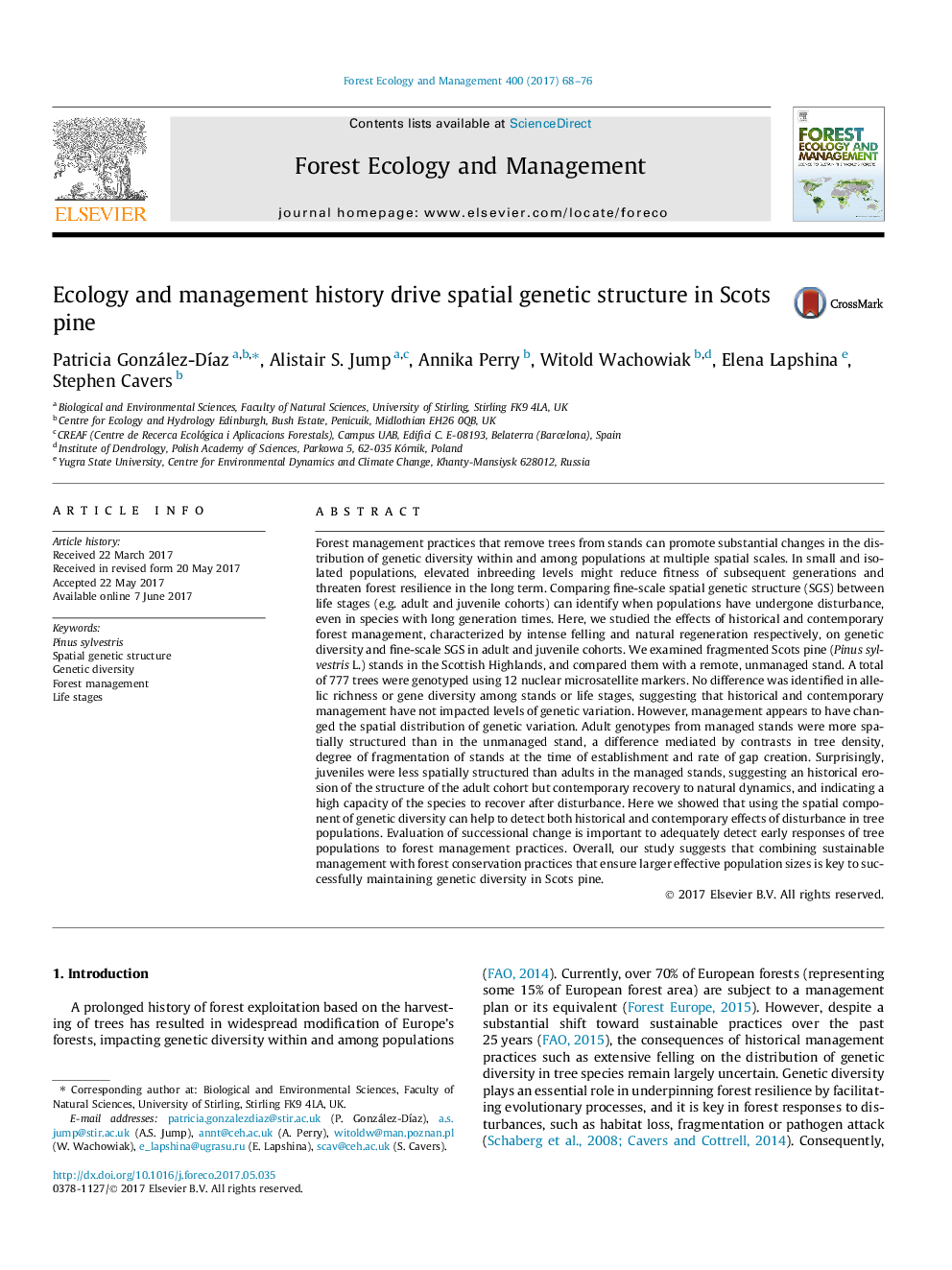| Article ID | Journal | Published Year | Pages | File Type |
|---|---|---|---|---|
| 6459205 | Forest Ecology and Management | 2017 | 9 Pages |
â¢We assessed genetic diversity and spatial genetic structure in stands of Scots pine after cessation of intense management.â¢More extensive spatial genetic structure was found in mature managed stands than in an unmanaged control.â¢Reduced extent of spatial genetic structure was found in early stages of regeneration.â¢Our results indicate a high capacity of the species to recover after intense forest management.â¢Large effective population size is key to maintaining genetic diversity in Scots pine.
Forest management practices that remove trees from stands can promote substantial changes in the distribution of genetic diversity within and among populations at multiple spatial scales. In small and isolated populations, elevated inbreeding levels might reduce fitness of subsequent generations and threaten forest resilience in the long term. Comparing fine-scale spatial genetic structure (SGS) between life stages (e.g. adult and juvenile cohorts) can identify when populations have undergone disturbance, even in species with long generation times. Here, we studied the effects of historical and contemporary forest management, characterized by intense felling and natural regeneration respectively, on genetic diversity and fine-scale SGS in adult and juvenile cohorts. We examined fragmented Scots pine (Pinus sylvestris L.) stands in the Scottish Highlands, and compared them with a remote, unmanaged stand. A total of 777 trees were genotyped using 12 nuclear microsatellite markers. No difference was identified in allelic richness or gene diversity among stands or life stages, suggesting that historical and contemporary management have not impacted levels of genetic variation. However, management appears to have changed the spatial distribution of genetic variation. Adult genotypes from managed stands were more spatially structured than in the unmanaged stand, a difference mediated by contrasts in tree density, degree of fragmentation of stands at the time of establishment and rate of gap creation. Surprisingly, juveniles were less spatially structured than adults in the managed stands, suggesting an historical erosion of the structure of the adult cohort but contemporary recovery to natural dynamics, and indicating a high capacity of the species to recover after disturbance. Here we showed that using the spatial component of genetic diversity can help to detect both historical and contemporary effects of disturbance in tree populations. Evaluation of successional change is important to adequately detect early responses of tree populations to forest management practices. Overall, our study suggests that combining sustainable management with forest conservation practices that ensure larger effective population sizes is key to successfully maintaining genetic diversity in Scots pine.
